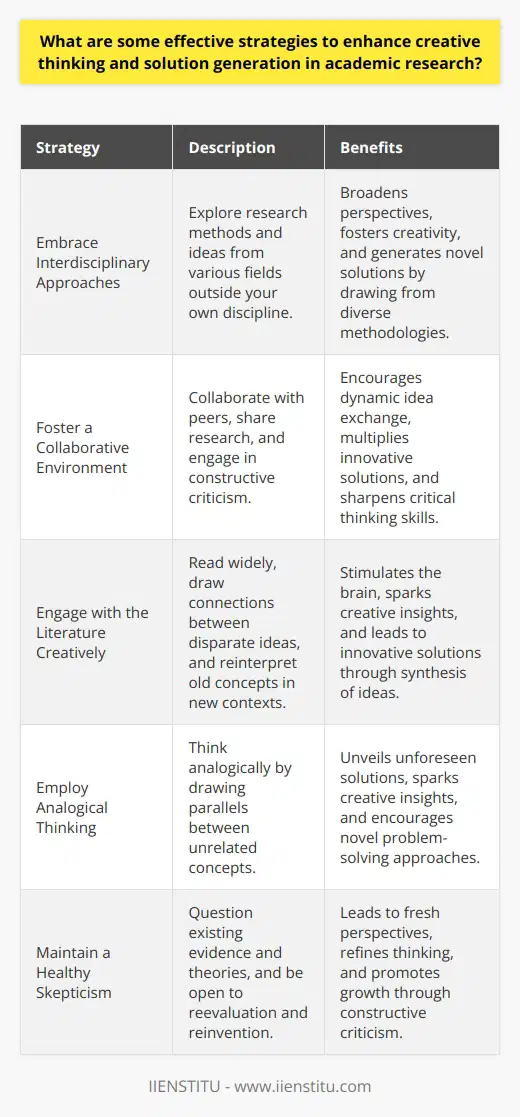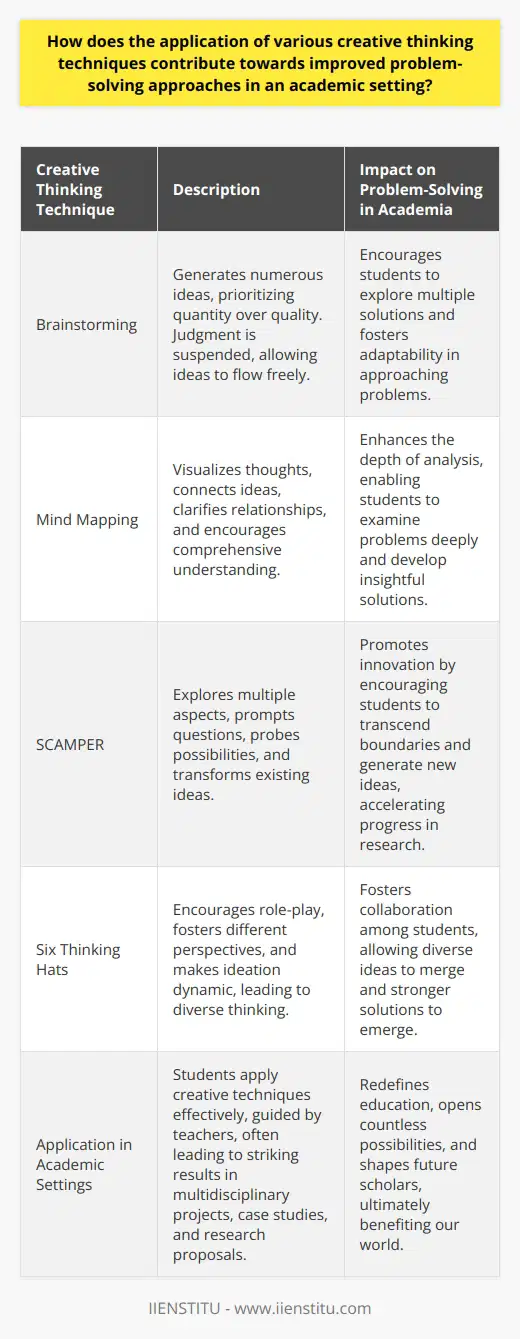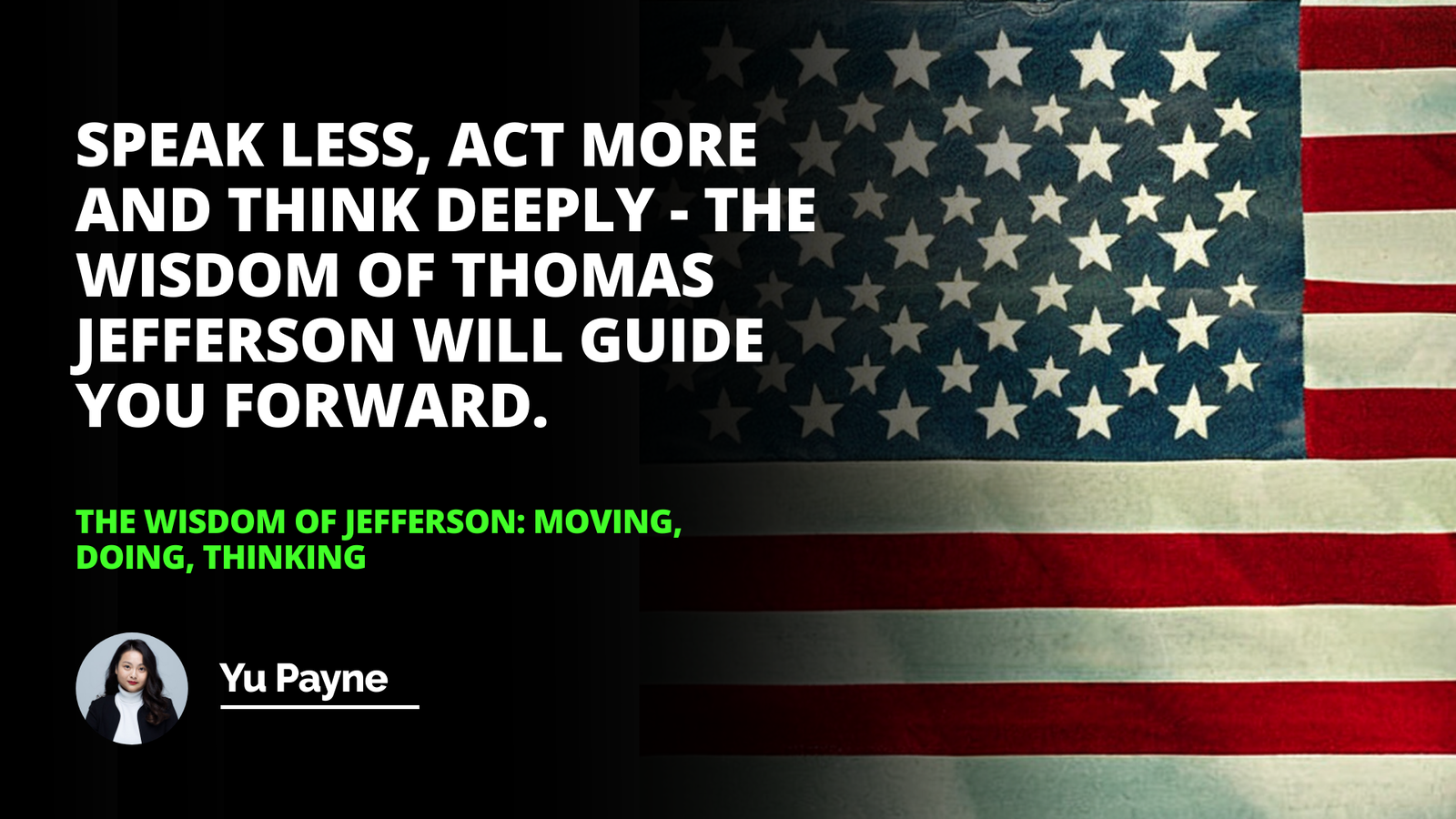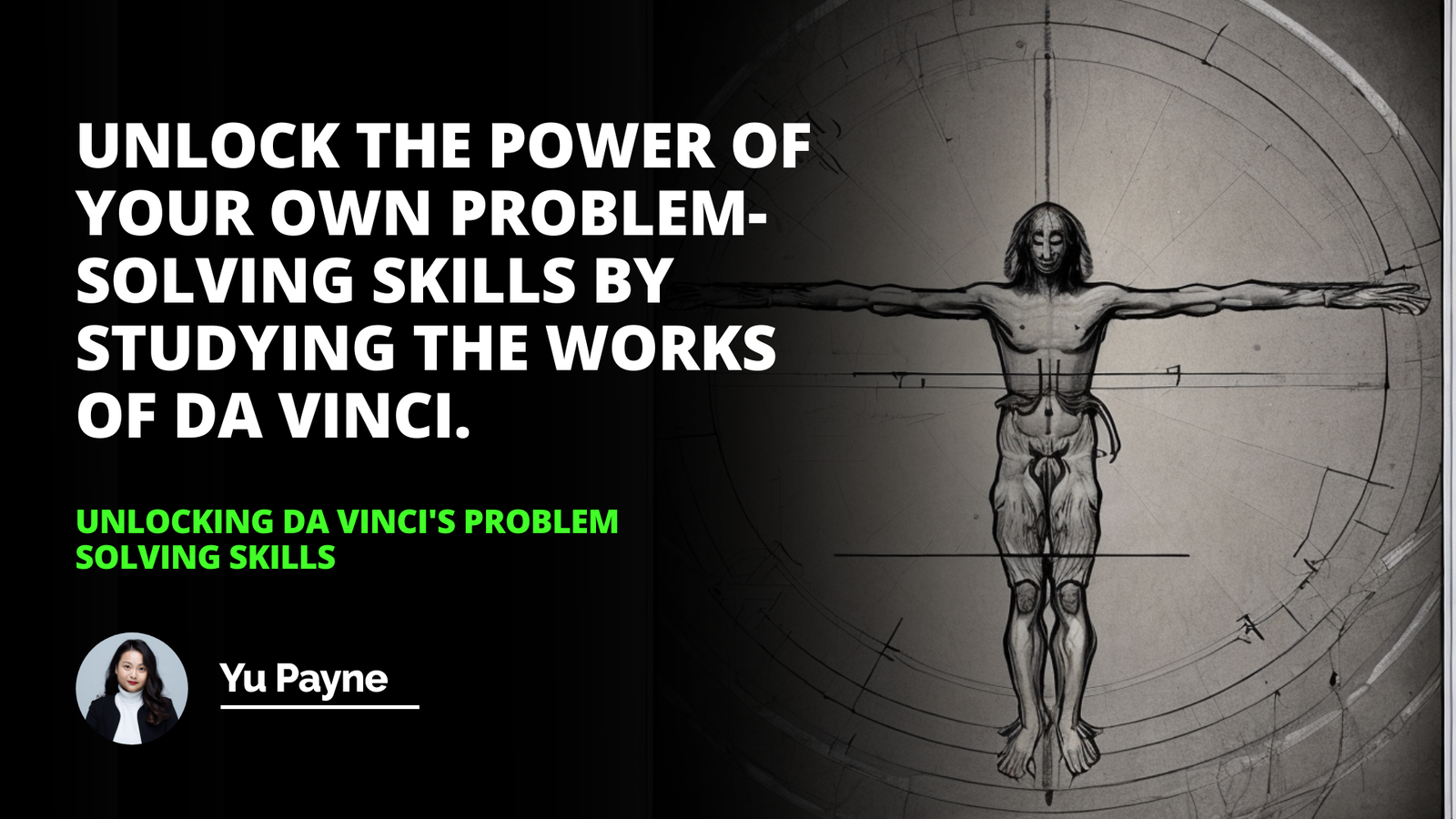
Creative thinking stands at the cornerstone of innovation, pushing the boundaries of what is known into the realm of possibility and discovery. It is a cognitive process marked by the ability to transcend traditional ideas, rules, patterns, and relationships and to create meaningful new ideas, forms, methods, and interpretations. In essence, it underpins the capacity to perceive the world in new ways and to find hidden patterns. This article delves into the nuances of creative thinking, elucidating its fundamental nature and the pivotal role it plays not only in individual day-to-day scenarios but also in professional arenas. As we explore the rich tapestry of creative thought, readers can expect to garner insights into harnessing this potent force, translating it into actionable strategies that affect both personal success and broader societal advancements.
The Process and Importance of Creative Thinking
Creative thinking often manifests through a dance of divergent and convergent thought processes. Divergent thinking is like casting a wide net – generating multiple, unique solutions or possibilities in response to a single problem or stimulus. Conversely, convergent thinking entails narrowing down these possibilities for the best possible solution. The interplay between these two modes of thought constitutes the essence of the creative thinking process, leading to innovation and originality.
In today's swiftly evolving landscape, creative thinking has become an asset and a necessity. The ability to adapt to new challenges and craft novel solutions not only propels individuals and organizations toward flourishing in an era marked by complexity and rapid change, but also empowers them with a competitive edge, resourcefulness, and value-added insights.
When put into practice, especially in decision-making and problem-solving, creative thinking breaks standard patterns and forges new paths. It fosters an environment where innovation can take root, leading to significant advancements across various sectors and industries.
The Role of Creative Thinking in Problem-Solving
Analyzing the utility of creative thinking in problem-solving highlights its potent role in devising strategies that extend beyond conventional frameworks. This non-linear approach to problem-solving inspires us to unearth effective and unconventional solutions, turning obstacles into stepping stones toward growth and success.
Real-world examples abound of creative thinking, making a monumental difference in addressing intricate predicaments. Entrepreneurs, for instance, often rely on creative thinking to navigate uncharted markets, while scientists use it to hypothesize novel approaches to research questions. Their ability to reconceptualize issues and explore untested pathways is the linchpin to their achievements and practical problem-solving acumen.
Creative Thinking and Innovation
Creative thinking is a wellspring of ingenuity that intrinsically fuels innovation. Through this potent facet of cognition, new products, services, and processes are conceived, which can redefine industry standards and consumer expectations. The ripples of this influence are evident in the historical chronicles of technology companies that revolutionized user experience through innovative design thinking.
Case studies from various sectors, from technology to education, showcase how creative approaches to product development and service delivery can disrupt the status quo and set a precedent for excellence and originality. In these scenarios, creative thinking is not merely a coincidental element but the core engine driving breakthrough innovation.
Enhancing Your Creative Thinking Skills
Embellishing one's palette of creative thinking abilities requires a structured and intentional approach. Cultivating these skills isn't an overnight occurrence; it is a deliberate journey marked by persistence and an openness to experience. To embark on this path, one might begin by engaging in exercises that stimulate divergent thinking patterns, embracing uncertainty, and experimenting with various idea-generation techniques.
Practical advice for creating an environment that nurtures creative thinking includes setting up collaborative spaces that promote dialogue and brainstorming sessions. Encouraging cross-disciplinary interactions can also offer fresh perspectives and insights that fuel the creative process.
Mindset for Creative Thinking
The pursuit of a fertile, creative mindset begins with fostering curiosity, flexibility, and a willingness to embrace ambiguity. Techniques such as meditation, free writing, and engaging with art can be invaluable in overcoming mental blocks that hinder creativity. These practices help to sharpen focus and build the mental resilience needed to challenge existing paradigms and embrace new ideas.
Creative Thinking Tools and Techniques
A compendium of creative thinking tools and techniques stands ready to aid those seeking to enhance their intellectual horizons. Mind maps serve as a visual scaffold for organizing and generating ideas, while lateral thinking pushes the boundaries of ordinary solution pathways. Brainstorming, in its collective synergy, harnesses a group's combined perspectives to unbridle a wealth of creative potential.
Each tool and technique carries its unique merits and fitting applications. For instance, mind mapping might assist in breaking down complex concepts into more digestible components, lateral thinking could unlock unconventional solutions, and brainstorming sessions may lead to a democratic and diverse set of ideas.
The Challenges and Solutions in Practicing Creative Thinking
Committing to a creative thinking practice is not without its trials and tribulations. Many individuals grapple with internal and external barriers that can suppress creative energies, thereby mitigating their ability to think imaginatively and express innovative ideas.
Barriers to Creative Thinking
Common impediments, such as the fear of judgment or failure, rigid thinking patterns, and a deficiency in intrinsic motivation, can stifle creative outputs. However, strategies such as setting aside designated times for creativity, maintaining a 'failure as feedback' mindset, and ensuring intrinsic drives like personal interest and satisfaction can help individuals overcome these hurdles.
Fostering a Culture of Creative Thinking
Cultivating a culture that endorses and values creative thinking is paramount for organizations and teams. This involves encouraging idea-sharing and risk-taking and actively rewarding creative endeavors. Illuminating case studies from leading companies reveal how cultural shifts towards valuing creativity yield substantial benefits – from greater employee engagement to groundbreaking products and services.
We draw this exploration of creative thinking to a close with a refreshing affirmation of its significance. The application of creative cognition is a universal asset, fostering innovation and enabling individuals and entities to navigate the complexities of modern life with grace and efficacy. These insights and strategies are markers of the expansive journey toward creative mastery. This journey promises to enrich the personal and professional dimensions of those who walk its path. As you venture forward, may this article serve as a catalyst, compelling you to weave creativity into the fabric of your daily endeavors with renewed vigor and vision.
Frequently Asked Questions
What are some effective strategies to enhance creative thinking and solution generation in academic research?
Enhancing Creative Thinking in Academic Research
Identify a Clear Research Question
Start with a precise question. Research thrives on specificity. Ancillary questions then emerge. This approach narrows focus. It propels deeper investigation. Original thought often follows naturally.
Embrace Interdisciplinary Approaches
Explore outside your field. Academic silos stifle innovation. Interdisciplinary research fosters creativity. It broadens perspectives. It also generates novel solutions. Diverse disciplines offer unique methodologies. These methodologies can inspire creative approaches.
Foster a Collaborative Environment
Collaborate with others. Different viewpoints can enhance creativity. Teamwork encourages dynamic idea exchange. Collaborative spaces can multiply innovative solutions. Share your research with peers. Invite their feedback. Engage in constructive criticism. This practice sharpens critical thinking.
Cultivate Intellectual Curiosity
Remain curious always. Ask "why" and "how" frequently. Intellectual curiosity drives discovery. It questions conventional wisdom. Pursue your research interests passionately. This passion often leads to inventive insights.
Engage with the Literature Creatively
Read widely. Don't limit your reading to your niche. Literary exposure stimulates the brain. Draw connections between disparate ideas—Reinterpret old concepts in new contexts. Innovative solutions often come from such syntheses.
Employ Analogical Thinking
Think analogically. Analogies can spark creative insights. They draw parallels between unrelated concepts. This cognitive tool can unveil unforeseen solutions.
Practice Divergent Thinking
Try divergent thinking. Generate many possible solutions. Resist premature judgment. Volume matters here. Later, sift through the ideas. This method yields unexpected, viable solutions.
Adopt a Problem-Solving Mindset
Approach research as problem-solving. Break significant questions into smaller parts and tackle each component separately. This strategy helps manage complex issues and allows for incremental progress.
Utilize Visual Tools
Use visual aids. Diagrams and mind maps clarify complex ideas. They highlight relationships between concepts. Visualization encourages pattern recognition. Patterns can indicate innovative solutions.
Experiment with Thought Experiments
Conduct thought experiments. Envision hypothetical scenarios. This exercise releases creative constraints and tests the limits of ideas.
Take Intellectual Risks
Don't fear intellectual risk. Challenging the status quo can be fruitful. It often illuminates unexplored paths. Many groundbreaking discoveries stem from risky ideas.
Reflect and Iterate
Reflect on your process. Regular reflection offers insights into your thinking. Adapt and refine your approach accordingly. Iteration is crucial to improvement.
Give Yourself Mental Breaks
Rest your mind. Breaks are not counterproductive. They can recharge creative faculties, and sometimes, solutions emerge during downtime.
Maintain a Healthy Skepticism
Question everything. Healthy skepticism can lead to reevaluation and reinvention. Always scrutinize existing evidence and theories.
Encourage a Growth Mindset
Develop a growth mindset. View challenges as opportunities. Embrace failure as a learning tool. Persistence often pays off in research.
Be Open to Feedback and Critique
Welcome feedback and critique. They provide fresh perspectives. They can refine or redirect your thinking. Constructive criticism is invaluable for growth.
Stay Persistent
Persist in your endeavors. Creativity often requires time, and patience can yield rich rewards. Academic research is a marathon, not a sprint.

How does the application of various creative thinking techniques contribute towards improved problem-solving approaches in an academic setting?
Creative Thinking in Academia
Understanding Creative Thinking
Creative thinking holds power. It sparks innovation. Academia relies on it. Traditionally, it follows rigid structures, which often limit thought. Yet scholars seek creativity. It embraces ambiguity, explores the unknown, and celebrates complex problems.
Techniques That Foster Creativity
Several techniques enhance creative thinking. These techniques break conventional thought patterns, encourage ideas' free flow, and require divergent thinking.
- Brainstorming: Generates numerous ideas. It prioritizes quantity. Judgment gets suspended. Ideas flow freely.
- Mind Mapping: Visualizes thoughts. Connects ideas. Clarifies relationships. Encourages comprehensive understanding.
SCAMPER: This technique explores multiple aspects, prompts questions, and probes possibilities. It transforms existing ideas.
- Six Thinking Hats: Encourages role-play. It fosters different perspectives. Ideation becomes dynamic. Diverse thinking emerges.
Impact on Problem-Solving
Creative thinking techniques transform problem-solving. They do so notably in academic settings.
- Enhances Flexibility: Students develop adaptability. They approach problems uniquely. Multiple solutions become evident.
- Promotes Depth: Analysis gains richness. Problems get examined deeply. Insightful solutions arise.
- Encourages Innovation: New ideas flourish. Research transcends boundaries. Progress accelerates.
- Fosters Collaboration: Group problem-solving benefits. Diverse ideas merge. Stronger solutions emerge.
Application in Academic Settings
Students apply creative techniques effectively. Teachers guide them. Striking results often happen.
- Multidisciplinary Projects: Different fields intersect. New solutions are born. Academia evolves.
- Case Studies: Real-world problems challenge students. Innovative solutions develop. Learning becomes relevant.
- Research Proposals: Fresh ideas receive encouragement. Novel research emerges. Academia advances.
Conclusion
Creative thinking enhances academic problem-solving, propels learning, and shapes future scholars. It redefines education and opens countless possibilities, benefiting our world.

Can you elucidate the correlation between creative thinking and successful implementation of theoretical concepts to actual practical scenarios?
The Nexus of Creativity and Practical Application
Understanding Creative Thought
Creative thinking stands as the vanguard of innovation. It embodies the human capacity to forge new paths. By nature, creative thought defies the conventional. It perceives beyond the seen, touching the sphere of possibilities. This mode of thinking remains not an esoteric skill but a universal potential. It thrives on curiosity and a willingness to challenge norms.
The Transition to Practical Realms
In theory, ideas abound. They exist in the abstract, free from real-world constraints. Yet, the transition from theory to practice requires a bridge. This bridge is a creative application. Consider the journey of an idea. It begins as a spark, a hypothesis. It seeks a pathway to manifestation. Creative thinking offers this route, allowing theoretical concepts to take shape.
Correlation in Action
The correlation between creativity and application success is clear. Creativity fosters adaptability. It enables the alteration of theoretical concepts to fit practical molds. It acts as a translator between abstract thought and tangible reality. Successful implementation hinges on taking an abstract idea and molding it, adapting it, and refining it until it fits within the parameters of practical scenarios.
To illustrate the power of this correlation, let's consider examples:
- Invention of the Airplane: The Wright Brothers blended scientific principles with innovative design. Creative thinking made theoretical aerodynamics soar.
- Advances in Medicine: Researchers apply creative problem-solving daily. They transform theoretical health sciences into life-saving treatments.
- Technology Development: Engineers and programmers turn complex theories into user-friendly devices. Creative coding bridges theory and practical utility.
Creativity as a Catalyst
Notably, creativity serves as a catalyst. It accelerates the evolution from theory to practice. Creative individuals can often see the end before the beginning. They envision the practical applications nested within complex theories. Without this foresight and innovative approach, many theoretical concepts might languish unexplored.
Challenges of Practical Application
The road from theory to practice is fraught with obstacles. Each theoretical concept carries its own set of challenges. When faced with these challenges, creative thinkers excel. They find ways to overcome barriers. They re-imagine and re-engineer until the concept fits within the practical scenario. Here, creativity is not just functional; it's critical.
The Iterative Nature of Creativity
It's vital to understand that creativity is iterative. It doesn't strike once but evolves through continuous application. Trial and error play a role. Feedback informs the next iteration. Each cycle of application enhances the creative link to practicality.
Conclusion: Creative Thinking as the Locus of Success
In conclusion, creative thinking and successful practical application are symbiotic. One feeds off the other. Theoretical concepts offer the seeds of innovation. Creative thinking nurtures these seeds, helping them flourish in the real world. From the Wright Brothers' flight to the latest app on your phone, innovative thinking has been the cornerstone of translating theories into the practical wonders we witness today.



